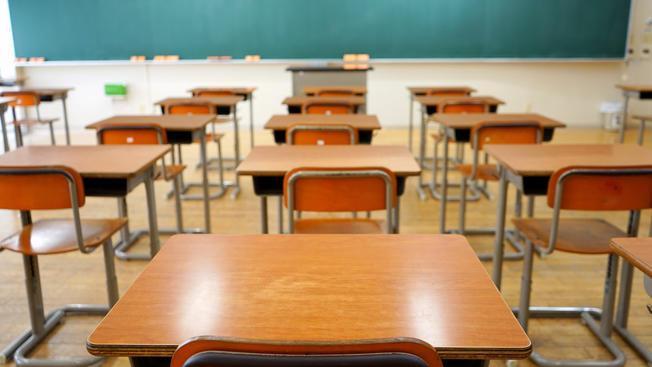Proposed changes to secondary school admission policies would render catchment areas pointless, according to a councillor.
Green councillor Sue Shanks spoke out at a council scrutiny meeting to discuss plans to change the catchment areas for Dorothy Stringer, Varndean and Longhill schools.
Brighton and Hove City Council also wants more choice for children eligible for free school meals or living in catchment areas with just one secondary school.
Children who might otherwise go to PACA, BACA, Patcham High or Longhill would, for example, have a better chance of going to Blatchington Mill or Dorothy Stringer.
Other proposals include reducing the published admission number (PAN) at Stringer, Blatch and Longhill and giving families a choice of four rather than three secondary schools when applying for places.
Councillor Shanks said that the proposals would give children living in a catchment area a low priority, adding: “Is there a different way of looking at this in a ‘whole city’ way because in the end people will be travelling with these new systems.
“It does make it more difficult for people to accept they’re not going to get into a school if they think they’re in a catchment area which isn’t going to catch.
“I’m wondering why we want to keep having catchment areas if they are not going to catch people who live in them.
“If you live in a catchment area that doesn’t necessarily mean you’re going to get into the school, why not say let’s not have catchment areas!”
Some fear that more children will end up travelling further to school at the busiest times of day and the distance might limit their chances of making the most of after-school activities.
Deputy council leader Jacob Taylor, who is leading on schools organisation, said that a citywide catchment area would result in distance-based criteria as applied before 2007 when catchments were introduced.
Councillor Taylor said: “My understanding is the previous system had similar levels of inequality and unfairness based around geographic proximity to school.
“There was a concept of the golden triangle around certain schools where everyone wanted to move into … so the council created catchment areas … and within that area you have an equal chance.
“If you return to a non-catchment or move to no catchment you still have many of the same tensions and inequalities.”
Councillor Taylor said that the council may not proceed with all the proposals in the public consultation but any major changes would require full council approval by the end of next month.
Exeter University economist Ellen Greaves, who has carried out extensive research into school admissions, said that Brighton and Hove was the only council in the country to have a lottery-based tiebreaker for oversubscribed schools. Most use distance.
Dr Greaves said that choice was valuable and recommended offering a choice of up to six secondary schools to help families express their preferences.
She said: “It would be possible to evaluate the effect of the free school meal policy introduced in this latest choice round and the effect of this (open admissions) proposed policy on who takes up the choice, who might be displaced into a non-catchment or non-preferred school.
“Then, by tracking over time, what their eventual outcomes are, their travel distances to school, GCSE performance and so on.
“That will obviously take a long time because it will take time for children to work through the school system but it would be possible to track at least the educational outcomes.”
Dr Greaves is seeking funding to evaluate the effects of the free school meals priority criteria introduced this year because there is no evidence at the moment, with the policy said to be the first of its kind.
She recommended having 10 per cent open admissions rather than 20 per cent once the effects of the free school meals priority on admissions had been established.
One of the aims of the council’s proposals is to give disadvantaged children a better chance of getting into the most popular schools. Another is to tackle falling pupil numbers.
School funding is largely linked to pupil numbers and the council has estimated that state secondary schools across Brighton and Hove will have 431 spare places by 2031.
The debate took place at Hove Town Hall as the council’s People Overview and Scrutiny Committee discussed the proposals yesterday (Tuesday 14 January).
A council consultation on the proposed changes started last month and a plan to reduce the year 7 intakes at three schools in September 2026
• Longhill – down 60 from 270 to 210 pupils
• Blatchington Mill – down 30 from 330 to 300 pupils
• Dorothy Stringer – down 30 from 330 to 300 pupils
A proposed “open admissions” policy would give children living in four catchments – for BACA, PACA, Longhill and Patcham High – a better chance of a place at schools such as Dorothy Stringer, Varndean, Blatchington Mill or Hove Park.
Another change would alter the boundary of the catchment area for Longhill and the catchment area for Dorothy Stringer and Varndean, giving children in Whitehawk a better chance of going to two of the area’s most popular schools.
At the time of writing, more than 1,200 people had responded to the consultation on the Your Voice section of the council’s website.
The deadline to respond is Friday 31 January.









How does dispensing with school catchment areas make school transport “sustainable”?
It would exponentially increase the need for transport if schools are not close enough to walk to.
In a city where no less than half a dozen roads appear to be closed for roadworks these days necessitating long queues and diversions, that could easily spell disaster for getting to school on time, never mind work for the parents.
Is this the same city which self-declared a “climate emergency” in 2018?
Surprising this is not the first point Green Councillor, Sue Shanks raised.
I don’t understand why Children who are entitled to Free School Meals should jump up the Cue to get Priority over those that pay for there Children School Meals, and in top proberly Monthly Travel expenses on top.
The Children that get Longhill as it’s there Catchment may get the Travel Expense but pay for Dinners and at the time £2.10 ( has that increased)
Some of us aren’t entitled to all the help, even if we are on Low Income.
And now Whitehawk could be in line for a better Catchment-it’s only those that are at the top of the Estate, those at the lower end still get Longhill.
This is why a lot of Families lie on there Address to get children into Dorothy Stringer or Varndean from Whitehawk-as we can get Hove Park, Cardinal Newman, Baca.
With School Admissions the way they are-there is no way they check the Child to the Address they are given, it’s the Postcode they look at to see what School is in your Catchment Area.